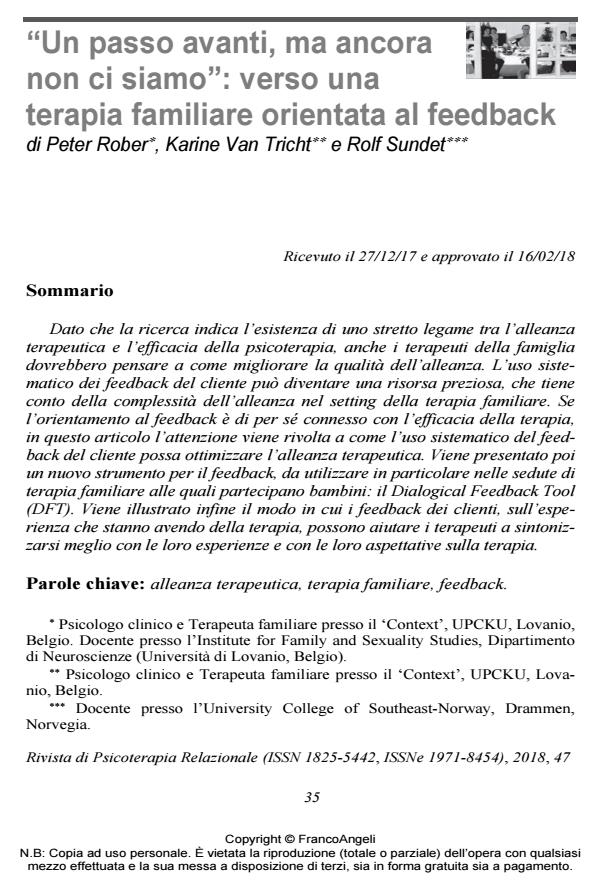"Un passo avanti, ma ancora non ci siamo": verso una terapia familiare orientata al feedback
Titolo Rivista RIVISTA DI PSICOTERAPIA RELAZIONALE
Autori/Curatori Peter Rober, Karine Van Tricht, Rolf Sundet
Anno di pubblicazione 2018 Fascicolo 2018/47
Lingua Italiano Numero pagine 28 P. 35-62 Dimensione file 422 KB
DOI 10.3280/PR2018-047004
Il DOI è il codice a barre della proprietà intellettuale: per saperne di più
clicca qui
Qui sotto puoi vedere in anteprima la prima pagina di questo articolo.
Se questo articolo ti interessa, lo puoi acquistare (e scaricare in formato pdf) seguendo le facili indicazioni per acquistare il download credit. Acquista Download Credits per scaricare questo Articolo in formato PDF

FrancoAngeli è membro della Publishers International Linking Association, Inc (PILA)associazione indipendente e non profit per facilitare (attraverso i servizi tecnologici implementati da CrossRef.org) l’accesso degli studiosi ai contenuti digitali nelle pubblicazioni professionali e scientifiche
Dato che la ricerca indica l’esistenza di uno stretto legame tra l’alleanza terapeutica e l’efficacia della psicoterapia, anche i terapeuti della famiglia dovrebbero pensare a come migliorare la qualità dell’alleanza. L’uso sistematico dei feedback del cliente può diventare una risorsa preziosa, che tiene conto della complessità dell’alleanza nel setting della terapia familiare. Se l’orientamento al feedback è di per sé connesso con l’efficacia della terapia, in questo articolo l’attenzione viene rivolta a come l’uso sistematico del feedback del cliente possa ottimizzare l’alleanza terapeutica. Viene presentato poi un nuovo strumento per il feedback, da utilizzare in particolare nelle sedute di terapia familiare alle quali partecipano bambini: il Dialogical Feedback Tool (DFT). Viene illustrato infine il modo in cui i feedback dei clienti, sull’espe¬rienza che stanno avendo della terapia, possono aiutare i terapeuti a sintonizzarsi meglio con le loro esperienze e con le loro aspettative sulla terapia.
Parole chiave:Alleanza terapeutica, terapia familiare, feedback.
Peter Rober, Karine Van Tricht, Rolf Sundet, "Un passo avanti, ma ancora non ci siamo": verso una terapia familiare orientata al feedback in "RIVISTA DI PSICOTERAPIA RELAZIONALE " 47/2018, pp 35-62, DOI: 10.3280/PR2018-047004